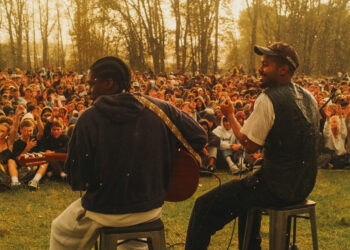By Darlene Edge, Montana Fish, Wildlife and Parks Lands Coordinator
All your friends have one and this is your year to purchase a Global Positioning System. Once you bring your new GPS unit home your first step will be to initialize it by inserting batteries and turning it on outdoors.
GPS is a system of radio-emitting and -receiving satellites used to determine positions on the earth. The orbiting satellites transmit signals that allow a GPS receiver anywhere on earth to calculate its own location.
Developed and operated by the U.S. Department of Defense, the system is to navigate, map, survey or perform other tasks that require precise positioning in an unknown or difficult to navigate area.
The first time out it may take the unit a few minutes to locate itself. While the unit tries to lock onto the satellites it needs, it may display the orbit of the satellites and their location in the sky or some similar graphic.
Brand name manufacturers–Garmin, Magellan, Lowrance, DeLorme, among others–use different software but provide essentially the same information. A GPS unit’s software is set up in “pages” of information, each with its own menu options.
To determine a specific position on the earth, a GPS unit engages a system of radio-emitting and -receiving satellites. These orbiting satellites transmit signals that the GPS receiver uses to calculate its own location. The U.S. Department of Defense operates this system of satellites to navigate, map, survey or perform other duties that require very precise positioning.
With a GPS unit you can mark where a downed animal is located, a rub, a wallow, a special fishing hole, your truck location, your campsite and more. You can also mark “waypoints,” creating an electronic bread trail to help you find your way back to a vehicle or main road.
When you have six to eight solid satellite locks and a good window, you should have an accuracy of about 15 to 25 feet. To “mark” your present location push “mark” and the unit will assign that location a waypoint number, or you can name it–for example camp, truck, or elk rub. From here you are on your way to exploring the ways you can put your GPS unit to work for you.
Say you’re at the trailhead. “Mark” your truck location and save it. Then select the “waypoint” for that great elk hole you saw earlier on the map. Highlight “go to” on your GPS and then “enter.” When you go to the GPS navigation page a direction arrow will now point the way to that elk hole, tell you how far away it is and provide other useful navigational information. The GPS unit directs you to go in a straight line, or “as the crow flies,” so you may have to go around a few obstacles along the way, but the pointer will continue to point the way.
When you’re done hunting for the day, find the “waypoint” for your truck and highlight “go to” and “enter.” The unit will now guide you back to your truck.
Another fun use of a GPS is to turn it on and walk to create a “track” that can then be used with the “Trackback” function. Or, you can create a route that you can retrace later by marking waypoints as you go along.
Here are definitions for some of the basic GPS terms you will encounter:
Waypoint: a specific location (usually a latitude/ longitude or Universal Transverse Mercator coordinate)
Mark: a function of recording your current location. “Mark” is generally a specific button on your unit.
Lock In: communicate with the satellite collecting data
Coordinate System: the coordinate system is a grid system that helps you find your location on a map. The two most common coordinate systems are Latitude and Longitude (Lat/Long) or UTM.
Universal Transverse Mercator (UTM): a grid-based method of specifying locations on the surface of the earth. There are books and online information on these systems.
Trackback: a return route.













